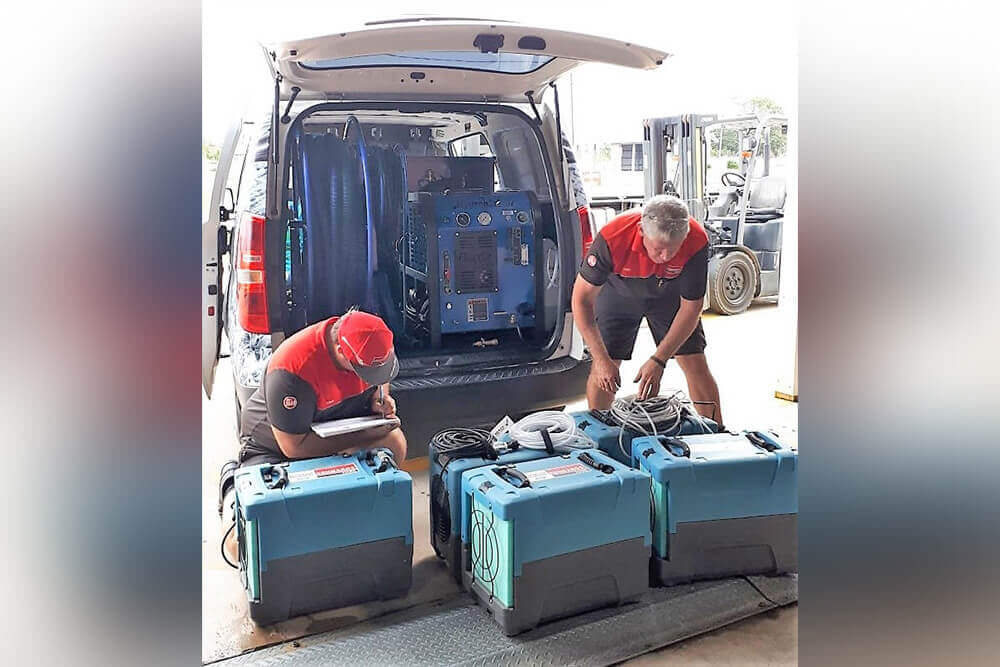Restoring Your Property After a Flood — Advice and Equipment to Help
Latest News
The time after a natural disaster can be stressful and trying. You may have had to evacuate your home, possibly leaving it unguarded to the elements. After conditions settle, you'll want to get back and start the clean-up as soon as possible.
There are many risks associated with a natural disaster and its clean-up, so being well-prepared and informed is crucial to do so safely and efficiently. This is especially true in the case of flooding, which comes with a variety of unique problems to deal with.
Before You Begin
Storms and floods can cause a tremendous amount of damage to the environments they pass through. Rising and receding flood waters, further adverse weather, and debris can all pose a serious risk to life. Never re-enter a storm damaged or flooded area until you have been instructed that it is safe to do so by the relevant authorities such as the Bureau of Meteorology. While waiting you should take the time to plan your clean-up operations and study health and safety information and advice.
Safety Considerations
When entering an area or property that has been exposed to, or damaged by storms and floods, you should be aware of the various risks and health hazards that may be present. Contaminated water, exposed electrical sources, mould, and hidden debris are just some of the health hazards you may experience. Always follow the help and advice on the best practices provided by officials to keep you and your family safe during clean-up operations. The Bureau of Meteorology has some information to get started here.
How to Clean and Dry Your Property
To clean and dry your property thoroughly you should utilise a number of pieces of equipment to make the process easier and safer. The precise equipment you require will depend on the extent of the damage and flooding, and how much the water has receded on its own. You should try to make clean-up plans as early as possible as rental supplies will likely be in high demand.
It's possible that electricity may not have been restored the property yet, or you have turned it off for safety reasons. A generator can help to supply power to aid in the clean-up operations and run essential appliances. When planning to use a generator, you should keep in mind that they need to be operated in a well-ventilated space. Generators also need to be designed for the loads they are going to handle so check your wattage requirements before hiring.
Without power, you will require lighting to work safely. Battery operating lighting provides bright, portable light to work by without requiring the use of mains power. Since there are no cables, it's easy to move around while you work through the property.
Before you can begin cleaning up properly, you need to remove any flood water still in the property and dry everything out. Pumps can help to remove water trapped in the property (for example in basements), while blowers and dehumidifiers will help to dry out the floors and walls after the water has been removed.
When drying the property out, check for residual mud in hard to reach places. If using heaters, then limit it to one per room to prevent warping and cracking of plaster and wood. Ignore mould as this stage, as it can be cleaned after drying.
Floor Stripper
Floor strippers help you to quickly and easily remove tiles, carpet, and vinyl. If water entered the property itself, the flooring will likely need to be lifted to aid in drying and to be replaced due to damage, staining, and contamination.
Power Washers
Power washers are a great tool to help clean ingrained stains and residue left on the exterior of the property from the rising water, concrete/stone surfaces, and some types of furniture.
Wallpaper Steamer
A by-product of flooding and the subsequent drying is that wallpaper will likely start to peel away, even if it remained unstained during the flood itself. You should expect to re-paper any rooms with wallpaper, and a wallpaper steamer is an essential tool to help you strip the existing paper. This can also speed up the drying process by exposing the bare walls.
Carpet Shampoo Machines and Floor Scrubbers
Once the property has been dried and disinfected, there will still likely be staining left by the dirty water. Carpet shampoo machines (sometimes called wet vacs) will help to clean carpeted surfaces, whereas floor scrubbers will clean and polish hard surfaces such as concrete or wooden flooring.
Kennards Hire offers a wide range of equipment available for hire to help you in your post-flooding clean-up. Call your local branch to find out how we can help you find the best and quickest solution.

